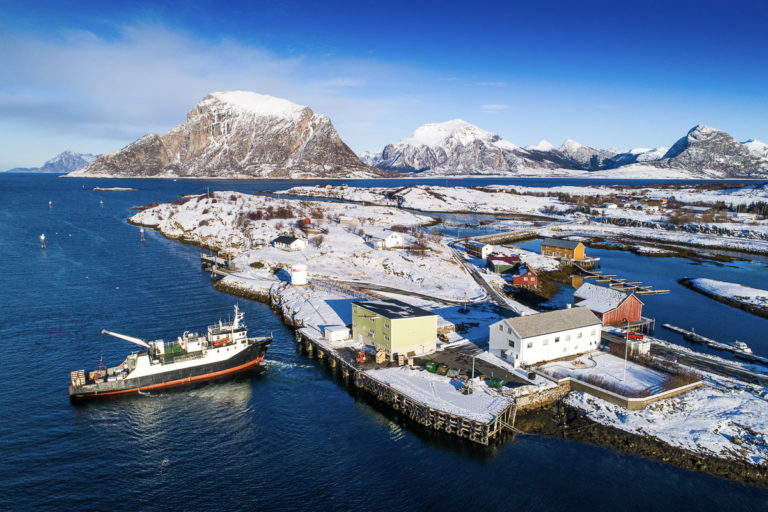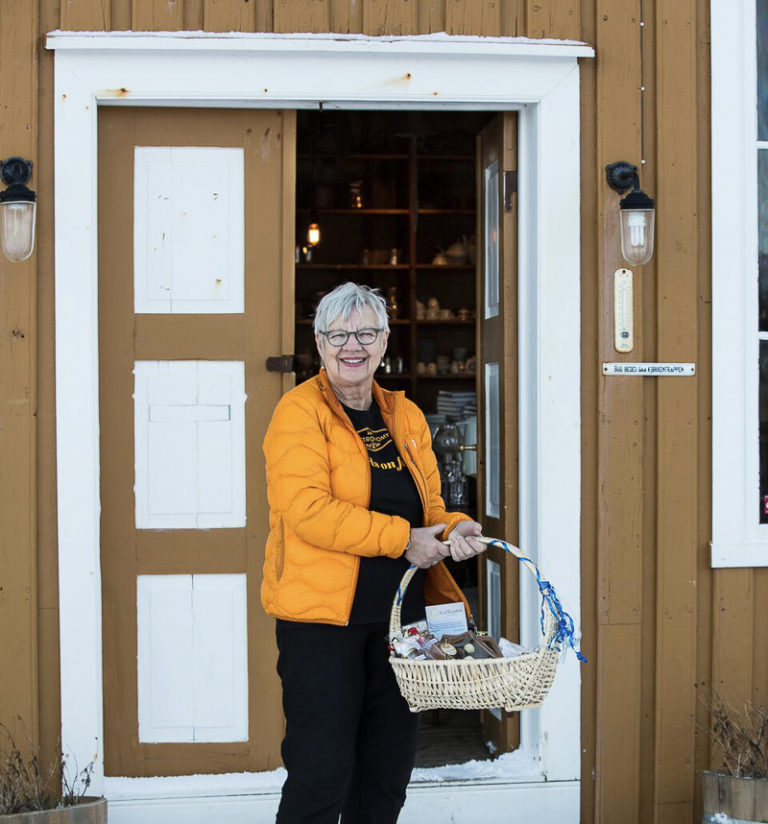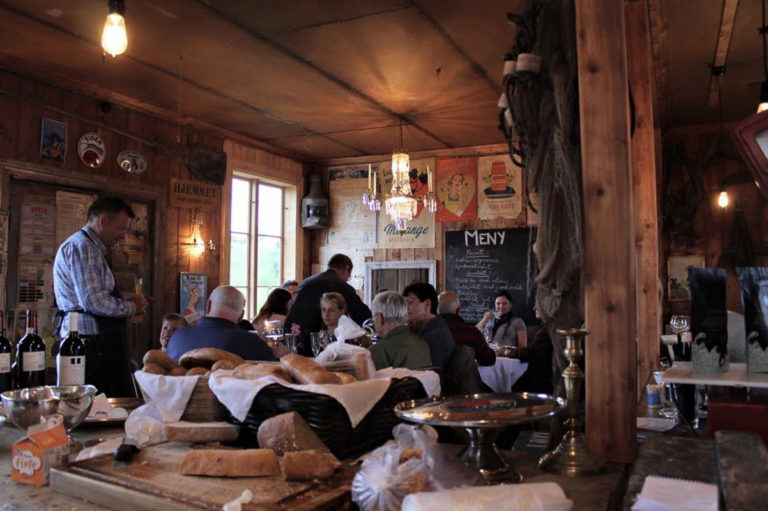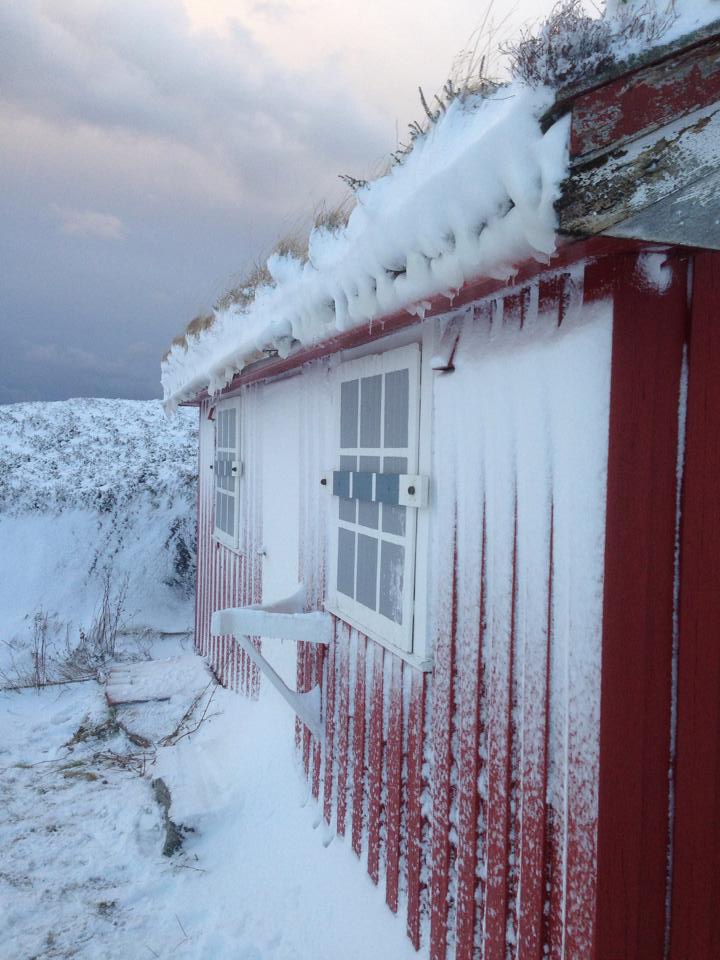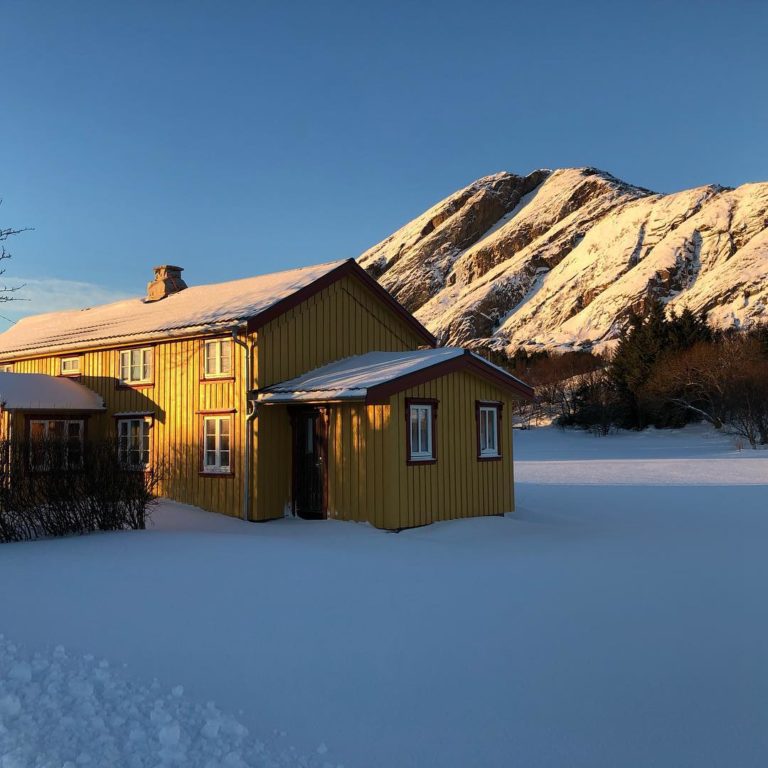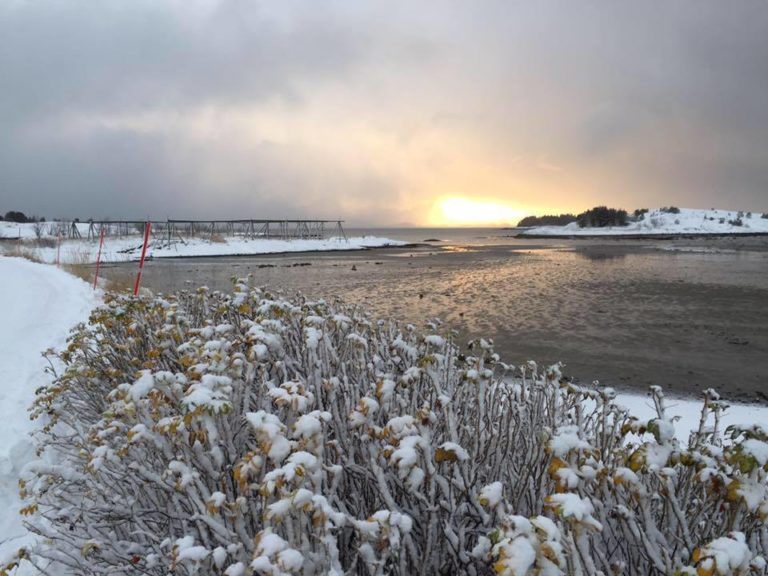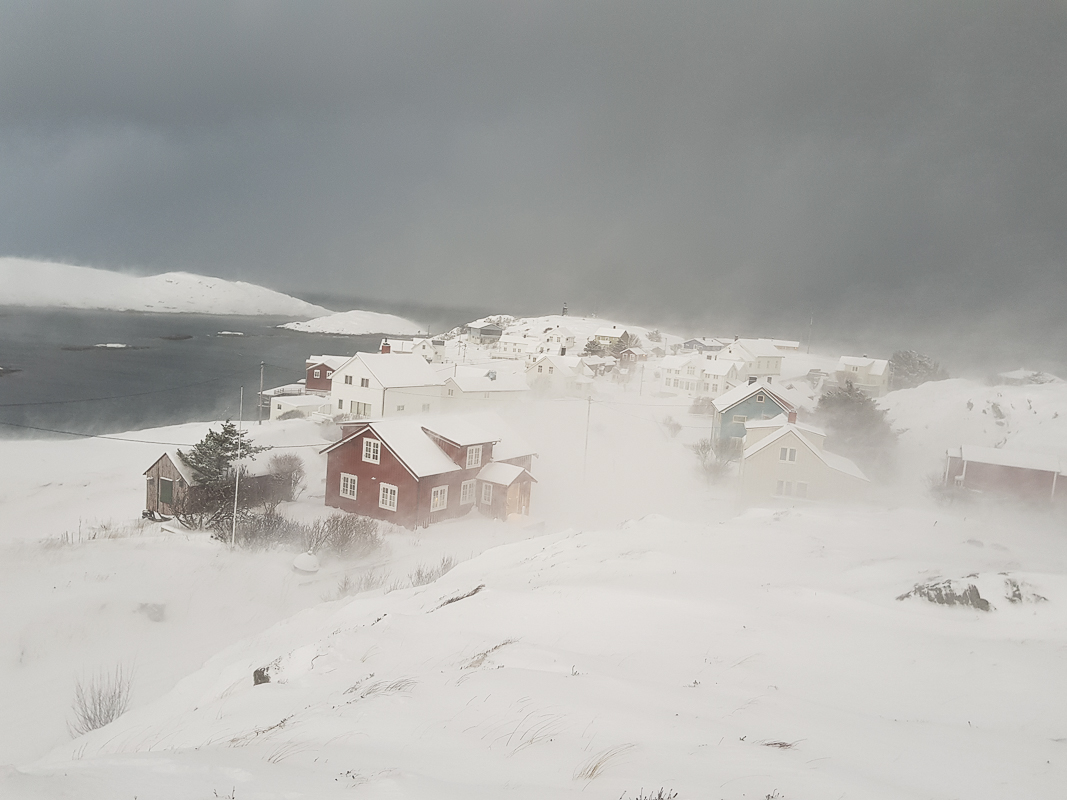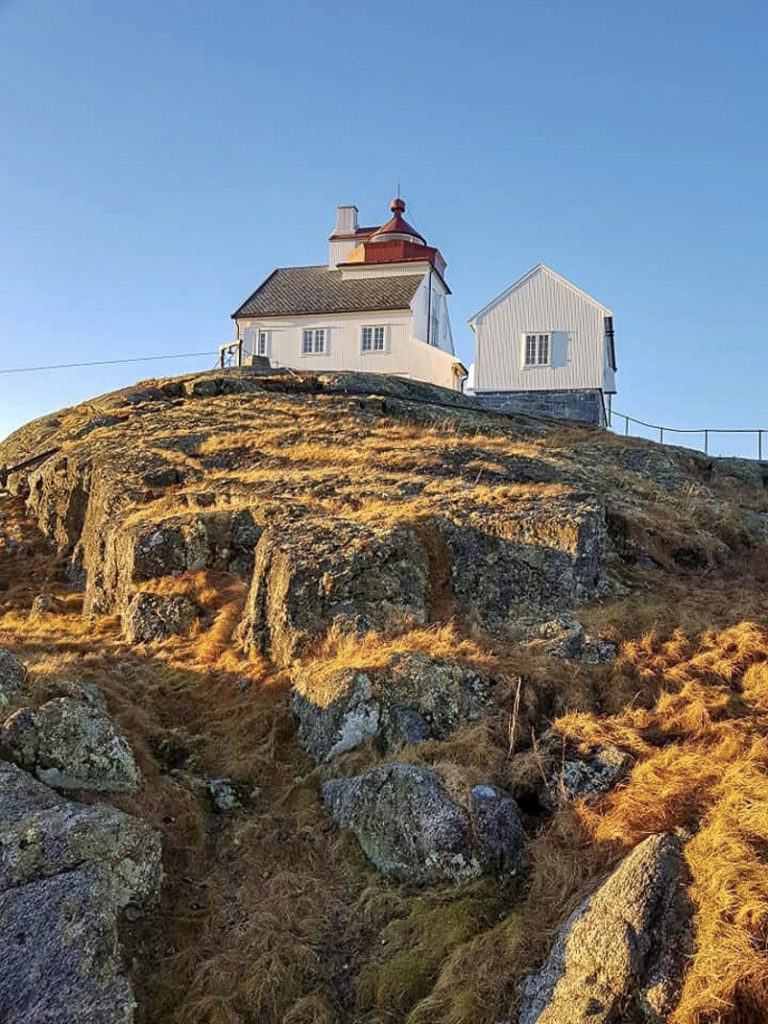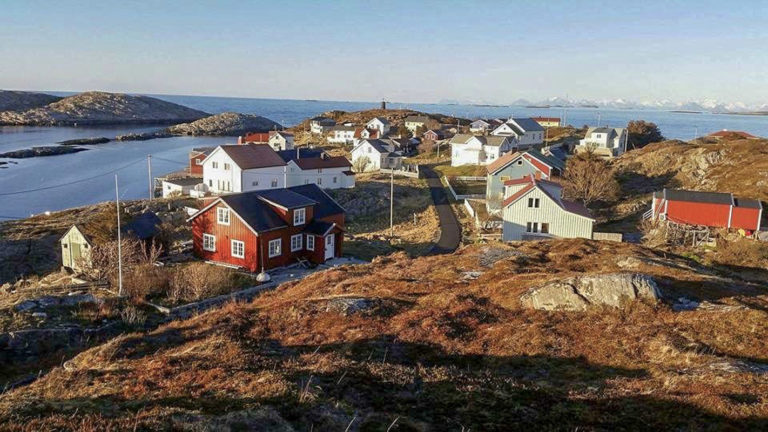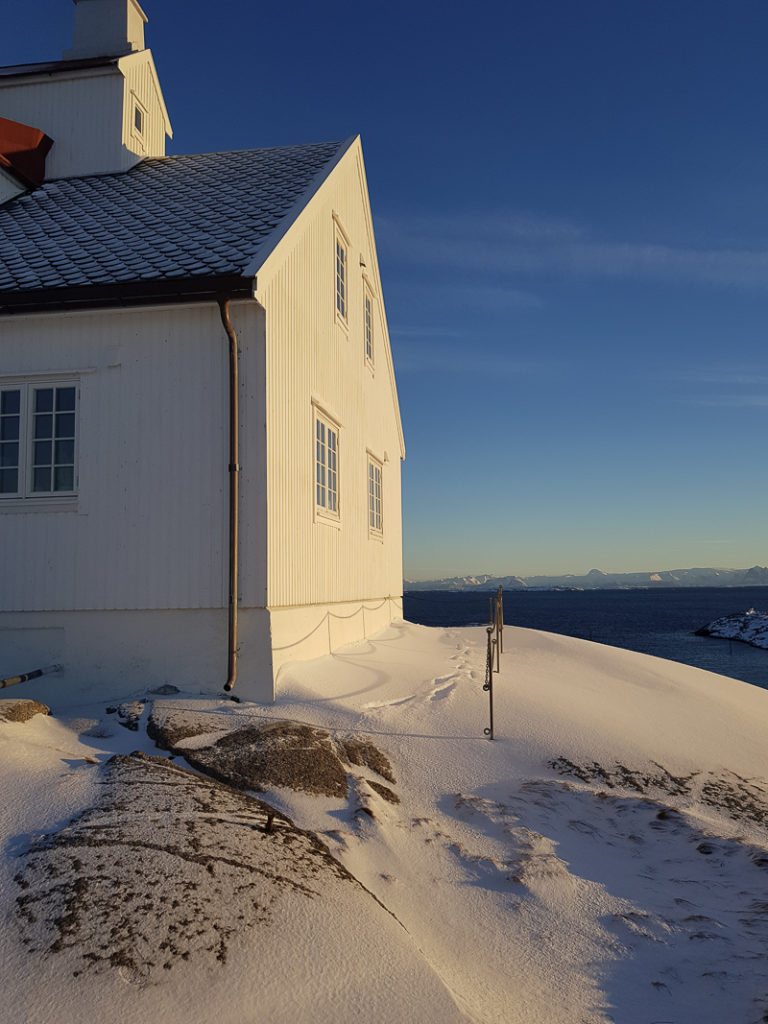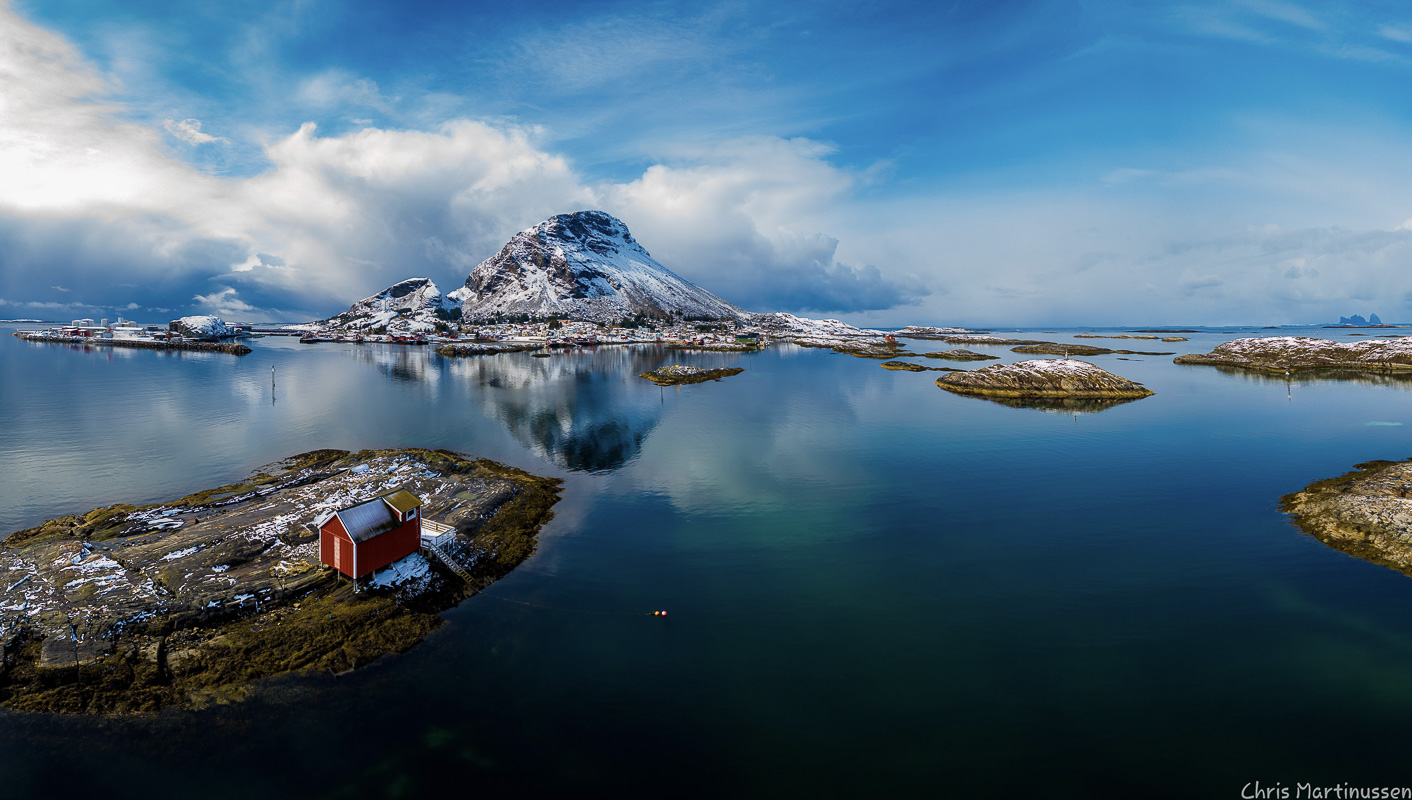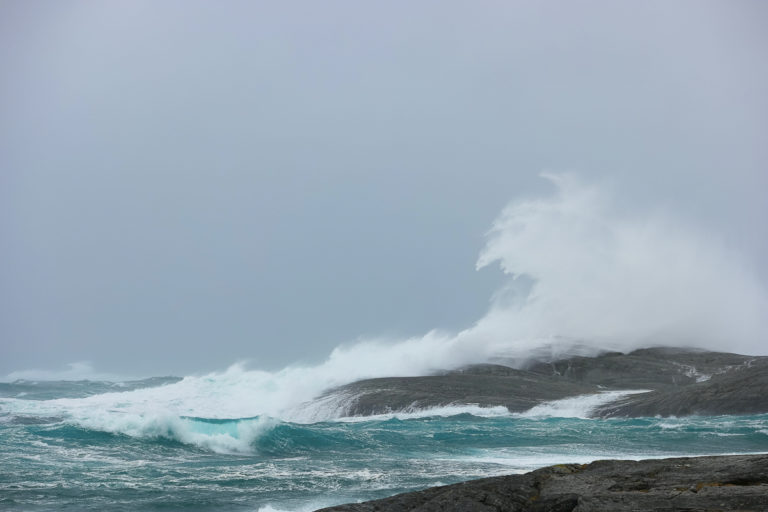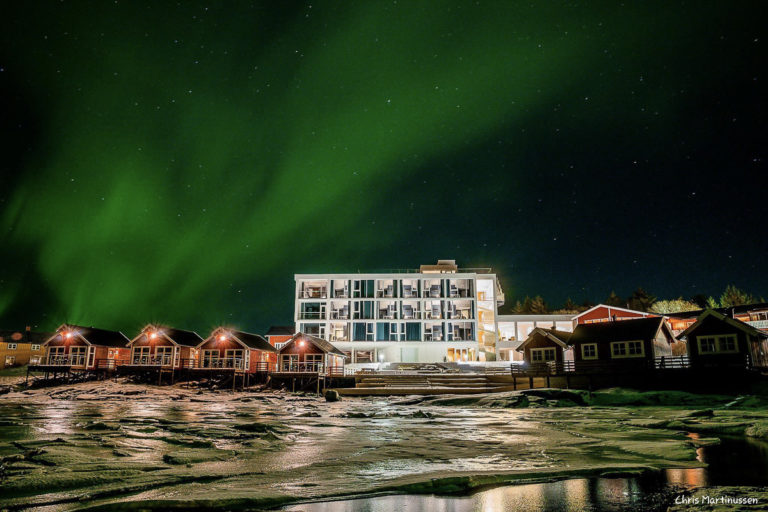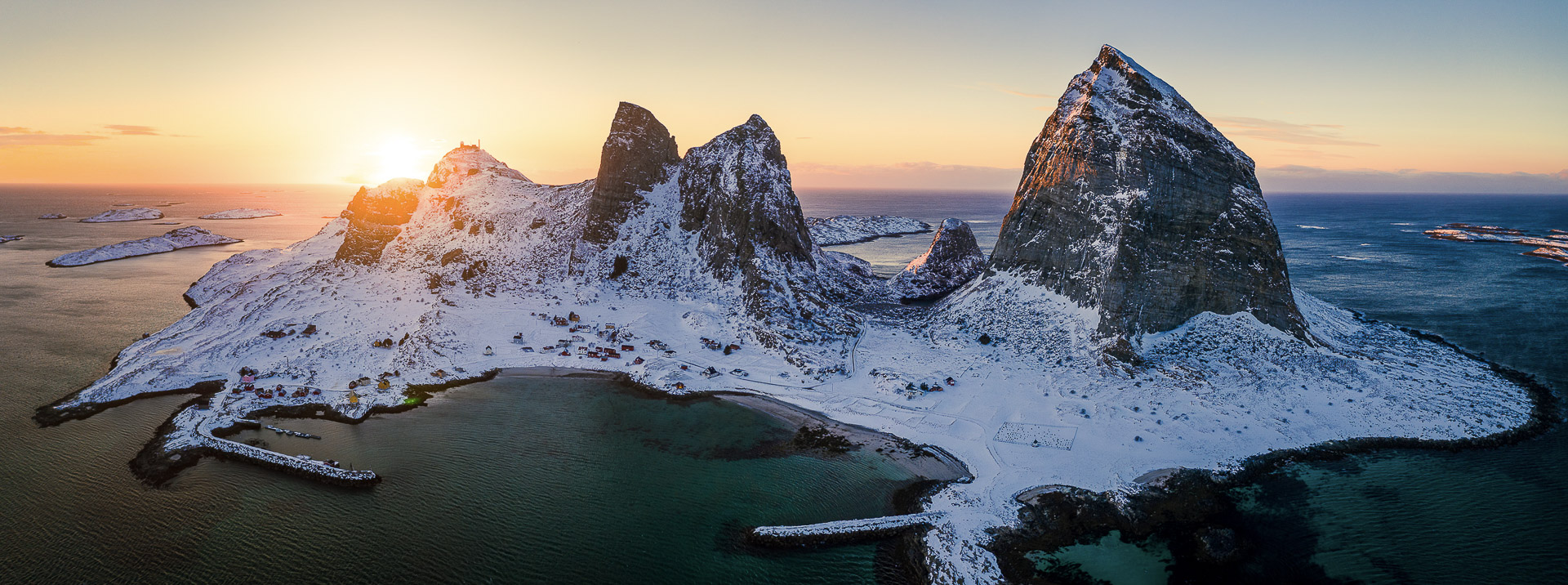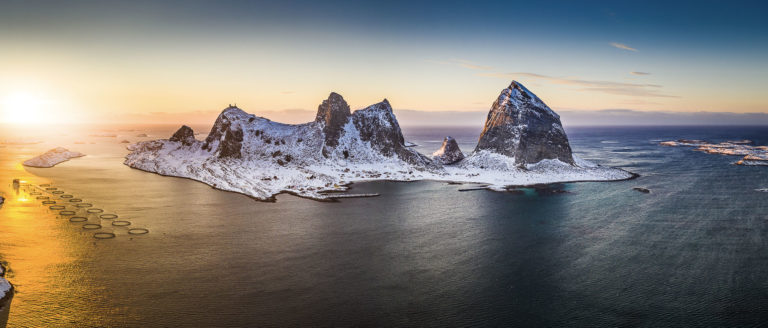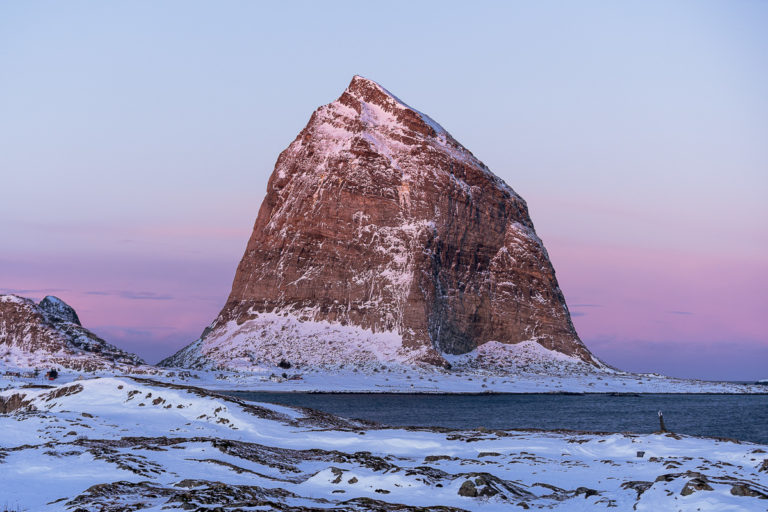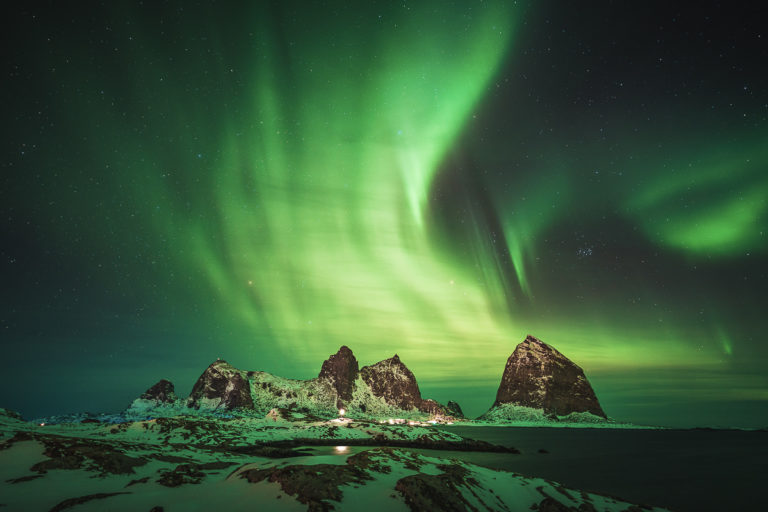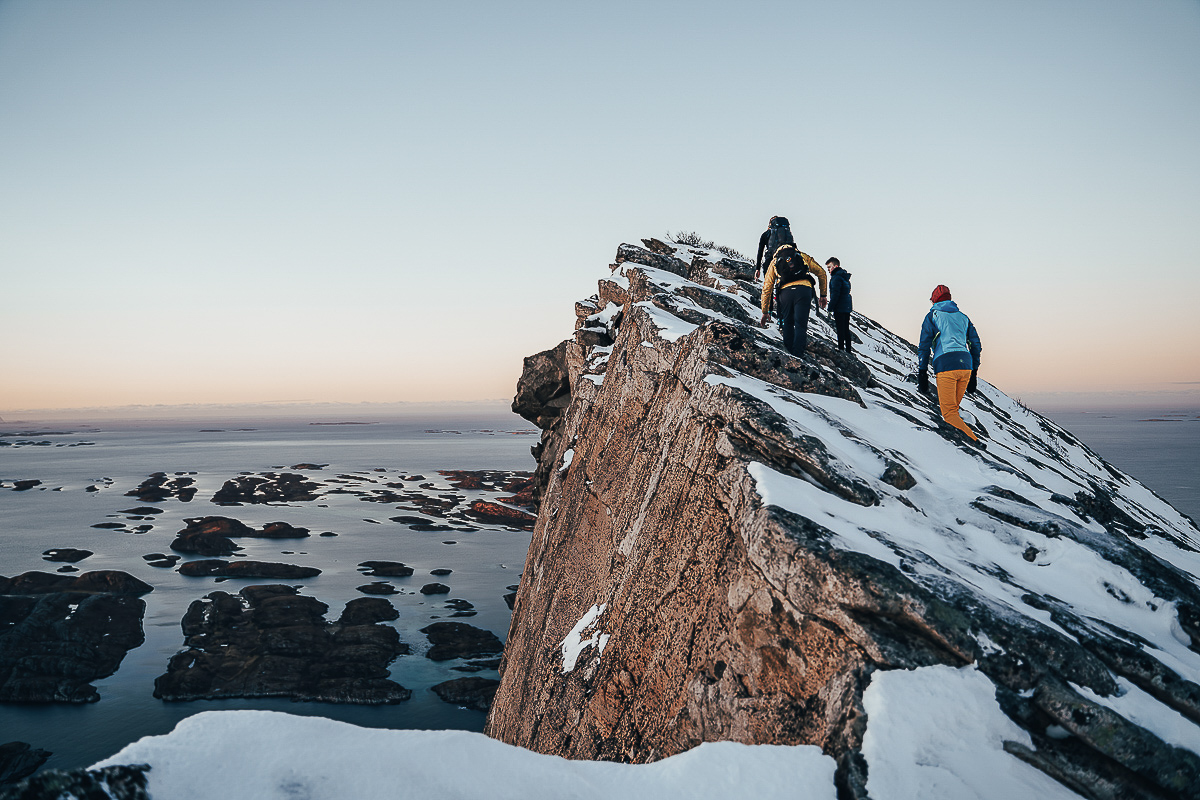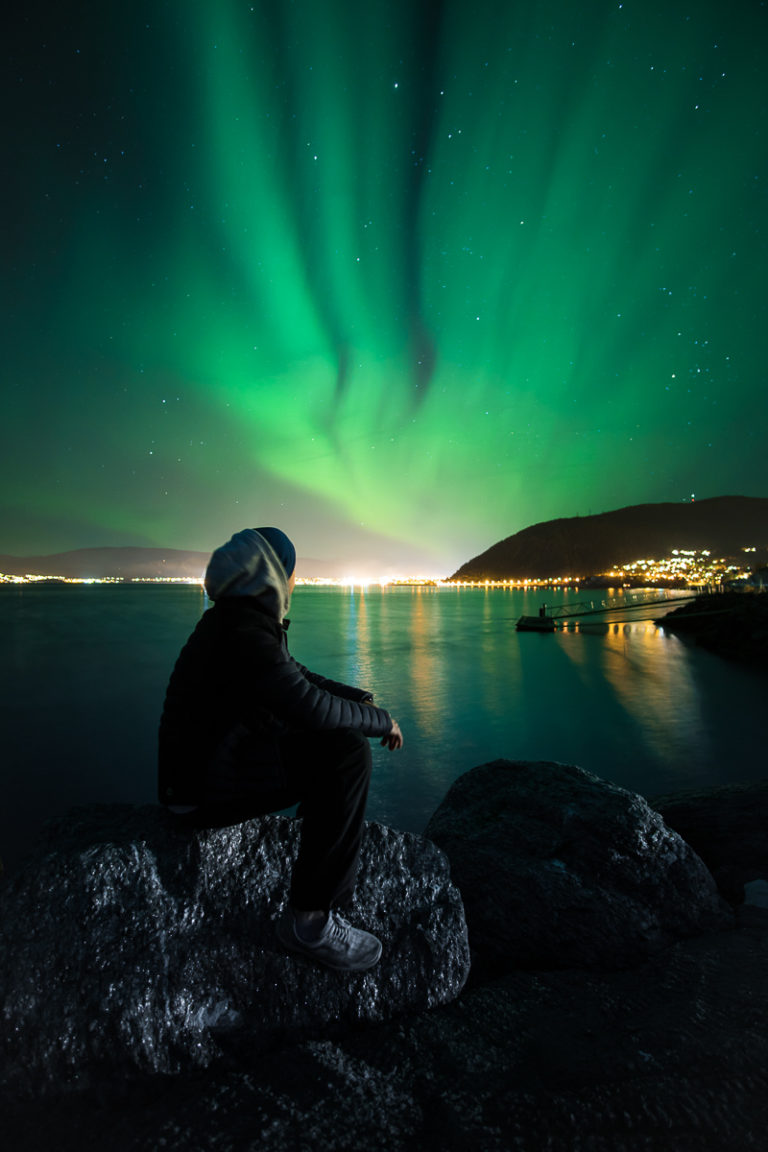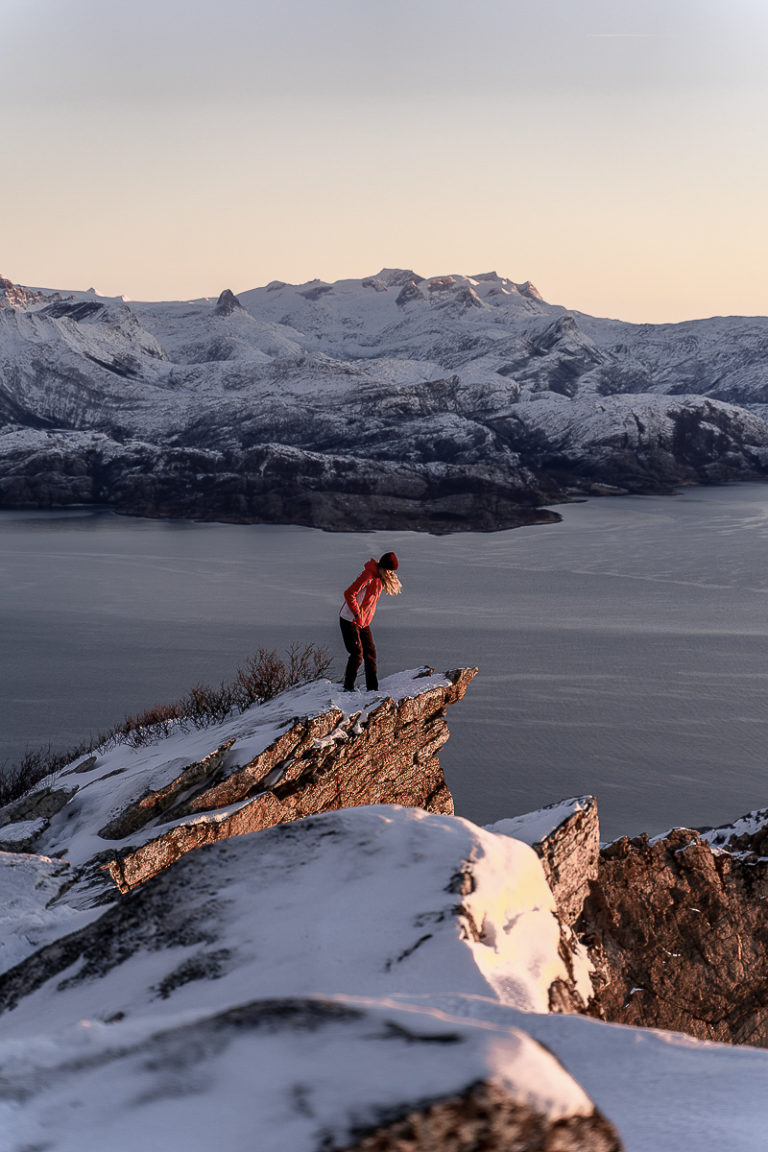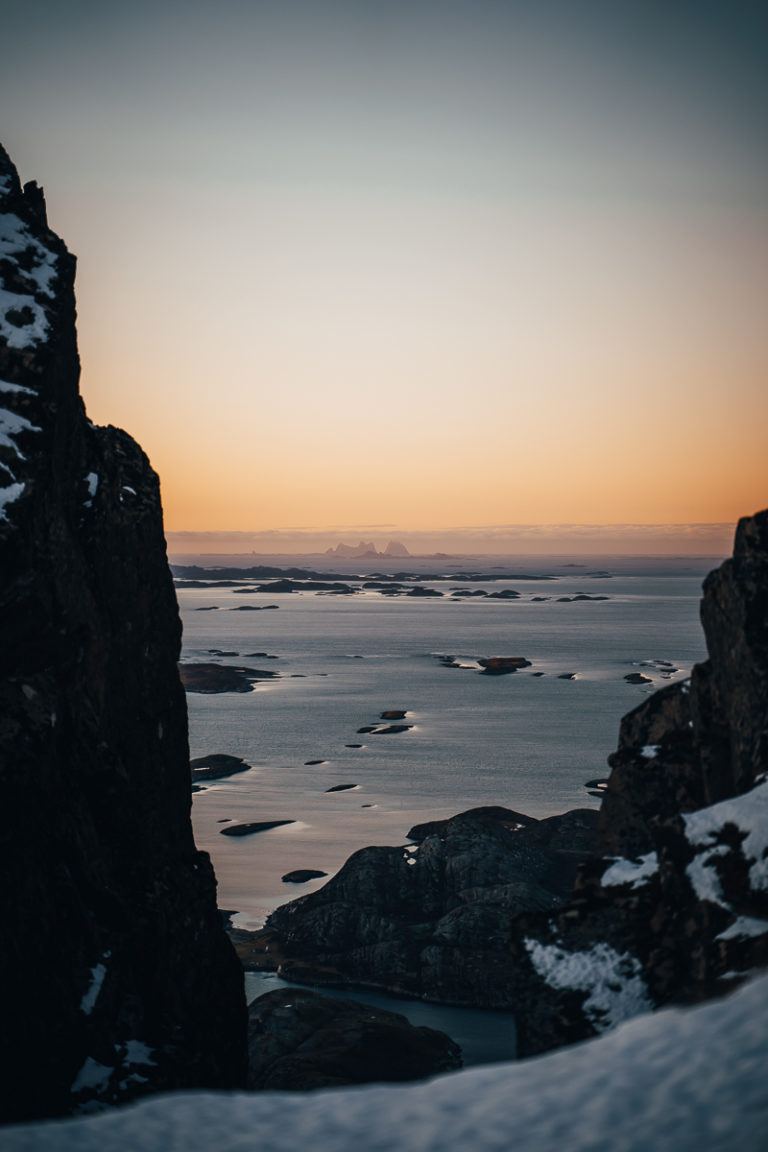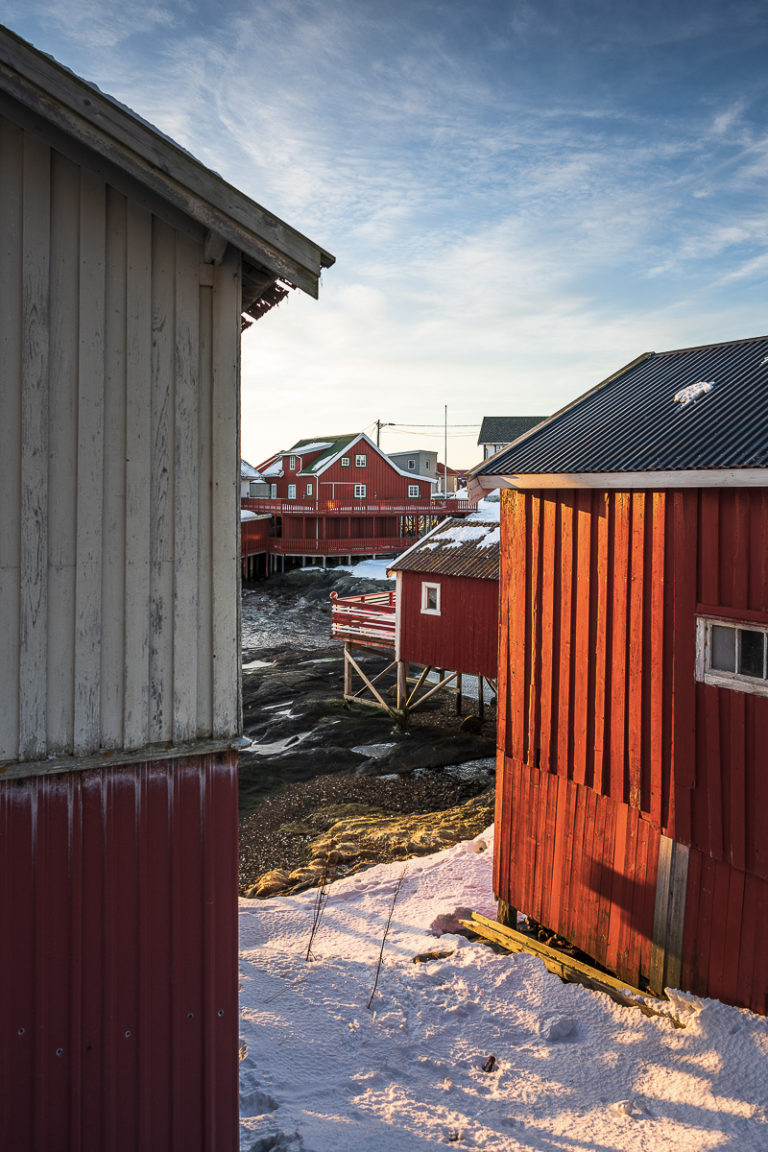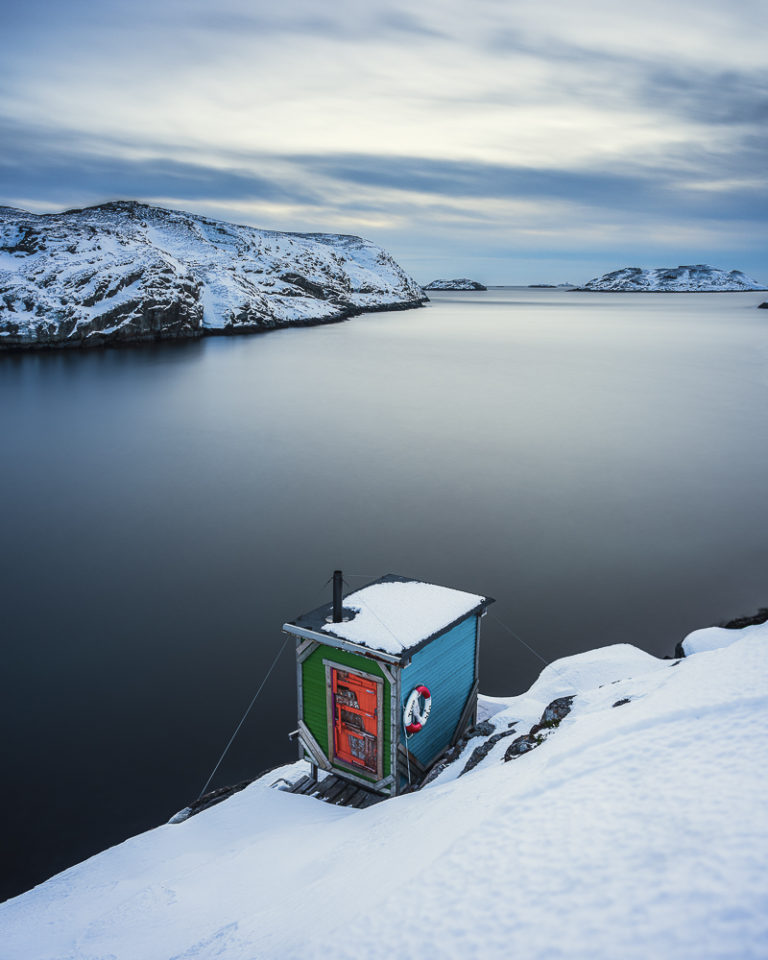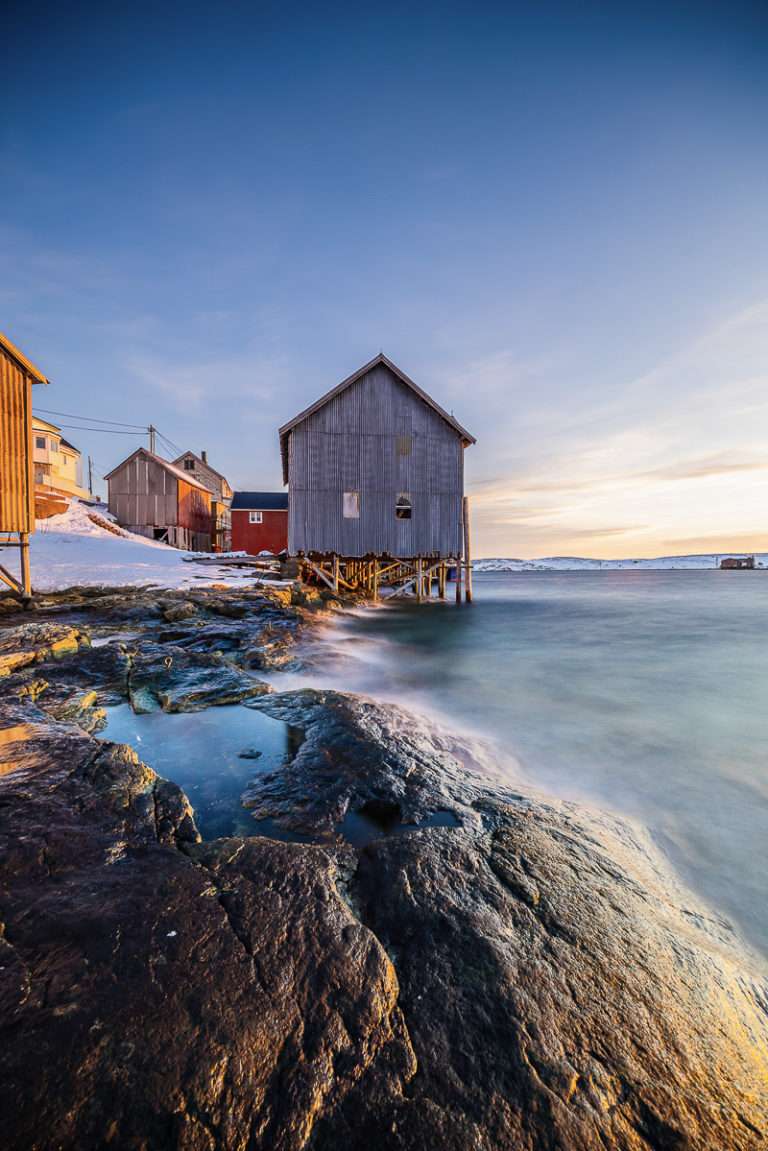Few people go to Helgeland to see the Northern Lights. The few that do, get surprised by lovely winter light, magnificent scenery and and the feeling of meeting hard-working, friendly and hospitable locals in their everyday life. The Northern Lights? Dress warmly and go to the beach!
Once I sailed along the Helgeland coast by ship in fabulous summer weather, one of the locals said “oh, it’s always like this here on the sunny coast”. With a wink and a smile. And surely, the Helgeland coast, albeit not always sunny, is fabulous in summer. The word is out, however, hotels and guesthouses fill up quickly, and one should reserve a rental bike early. The 20 000 islands, the busy ferries, the colourful villages and settlements, the view to fairy tale inspiring mountains and the precious historic sites are of course not wrapped up and stored away for the winter. They are of course still there for us to admire, just in a different light. Notably the Northern Lights. If you come here in winter, you find this picturesque coast as it really is. Let me suggest a few of the innumerable beauty spots along this lovely coast, and feel free to prove me wrong by finding some of the others. They are presented in north to south order.
Støtt is tiny island with old world charm
25 people inhabit the small and rather flat island of Støtt. Back in the days of sailing boats, the sheltered port at Støtt provided a haven while waiting for good weather to sail around Cape Kunna. The old trading post was where it all happened. Now you can hardly find a place further away from it all, Støtt is a sleepy little community. Go for a long walk to see the crumbling concrete from WWII fortifications and look out at the open sea. Beyond the skerries, you can see the southern tip of the Lofoten Islands on a good day. Guided hikes and kayaking can be organised on request. The beauty, though, is that you can go to the old trading post and have a really good meal and sleep under feather-filled duvets. Støtt has this bit of sophistication to complement the untamed scenery around.
Bolga is a tiny beaty spot sheltered by a big mountain
A village of some 100 people enjoys a sheltered position on the leeward side of a giant cliff. A little shop, a tourist resort with comfy modern houses and a small restaurant; the service on offer is limited. However, it’s all comfortable, you can explore the barren, rocky coast and unless it’s too icy, even climb the sugarloaf mountain of Bolgtinden for a commanding view of the whole archipelago. Boat trips and kayaking are also a possibility, but by no means a necessity.
Myken is a 12 people community in the middle of the ocean
12 people live on tiny Myken, the outermost of the thousands of islands and skerries in the Rødøy area just north of the Arctic circle. In summer, one cabin cruiser after the other sailboat anchor it its sheltered port, and the population multiplies. However, in winter, nobody but the real Myken inhabitants are around. The shop is open only two hours a day, but then they sell waffles and coffee, and visitors and tourists alike are invited. Walk around the village and take photos and walk along the breakwater to the lighthouse island for a view all around the island.
Tour the islands of Rødøy
Myken is the furthest out of the islands in Rødøy municipality. However, there are several islands just east. The old centre used to be Rødøy Island, where you can stay in the Klokkergården, a historic hotel. Excursions can be made to Rødøyløva, the lion-shaped mountain that makes the island easy to spot. The island has a historic feel to it, with colourful old houses. Selsøyvik today has but a handful of inhabitants, but the old trading post is still active. Hestmona is a monumental island that has inspired myths and legends. Tour the islands on the local boat as a rustic micro-cruise and make stops if the timetable allows it.
Lovund is a busy hub in the middle of the archipelago
The big lump of a mountain called Lovund is hard to miss when sailing amid the islands. Contrasting with the age-old solid rock is the young population. The salmon industry has revived the fortunes of this island, that today is positively buzzing with life. As buzzing as 500 people can be. This is an island with all the mod-cons, a modern hotel and a good restaurant, along with numerous activities all keep you entertained. However, it’s all found in a typical coastal village with a mix of old and new houses. There are also easy hiking routes, but the 623 metre high Lovund peak is only to be climbed in really mild conditions. Kayaking in Lovundværet, the cluster of small islands north of the main island, can also be done on good winter days.
Træna is the island furthest out
Anyone who has travelled around Helgeland couldn’t miss the three peaks of Træna – the name itself is derived from the number three – that punctate the island-strewn horizon. This archipelago of 4 inhabited islands is the furtest out of the 20 000 islands of the Helgeland coast. Visit the main island of Husøy for a bit of modern and traditional coastal life. Take the local boat to the other islands for daytrips, or stay on tiny Selvær for absolute calm.
Husøy is the main island of Træna
Most people on Træna live on the island of Husøy, which has good accommodation and a couple of places to eat. Densely populated (..ok, relatively…), it still has plenty of space to roam. There is art and photography strewn around the main island, you can meet the locals at the pub Havfolkets hus and eat well at Café Aloha (the Hawaii connection is cute). The coffee collective cultivates the art of good coffee. Get refreshed at one of the many saunas littering the beautiful landscape.
Visit the other islands on a daytrip, or stay in Selvær
Every day, there is a boat from the main island of Træna to Selvær (60 inhabitants), Sanna (2), Sandøy (1) and Holmen. Selvær has good accommodation, and the others are visitable on daytrips. Sanna is the bigger, in fact you can go on a mountain hike, go around the island and explore the Kirkhelleren cave, where people lived as far back as 9000 years ago. At the leanto on the western tip, you can see the sunset and the unobstructed view to Greenland.
Herøy and Dønna are the big islands
Bigger and with a less isolated feel, the two twin islands of Herøy and Dønna, connected with little breakwaters and bridges, are busy coastal communities. Their economic mainstay is the thriving salmon farming. History is all around on these islands, with the two wonderful mediaeval churches of Herøy (12th c) and Dønna (13th). Dønnes manor is a stately guesthouse/old manor with a rich history. Dønna har mountains that can be climbed with snowshoes or on foot, if the winter is mild. Herøy is flatter than almost anything in the north, affording a splendid view to the towering Seven sister range as well as to the thousands of islets offshore. The “top 5” hiking route at the lumpy Øksningan islands takes you to the dizzying height of 98 metres.
Vega is the big island in the south
The big island of Vega has 1200 inhabitants and is thus a giant compared to some of the others. The island even boasts a UNESCO heritage site, the World Heritage Centre, consecrated to the harmonious co-existence of eider ducks and humans. This love story takes place in late spring, but the centre gives a thorough introduction to the theme. There are plenty of easy hikes all around the island, and with a good wind-proof jacket, you can walk around. Here, hiring a car for a day could be a good idea, as it gives you the opportunity to see the wind-swept western side of the island as well as the sheltered cluster of farm on the south-facing side. The Vegatrappa staircase offers a commanding view of the 6000+ islets north of Vega, but should only be mastered when it’s not icy.
Winters are low light and strong colours in the sky
Helgeland does not experience the Polar Night, not even the northern areas that are within the Arctic circle. This means the days are longer than further north. However, the sun is lower than where you live, and the light must come through a lot of atmosphere. You get to experience a lot of golden, reddish colours. The low light also lends a golden hue to the landscape, colouring the snow patches and the bog lakes with a hint of apricot.
Northern Lights turn up when you least expect them
Hardly anyone goes to the Helgeland Coast to see the Northern Lights. Other regions are much better at providing guided tours to remote locations with clear skies. But to some of us, guided Northern Lights tours don’t sound like a holiday. Instead, it’s all about being alone with the Northern Lights. Sit in your little holiday house or guest house room, turn off almost all the lights, have the tripod on the ready and rush out. Or simply forget about the photography bit and just enjoy it. A long walk in the evening is another good way to enjoy them.
The snow cover is iffy
The Helgeland coast is the mildest area of Northern Norway. Often, there is no snow at all until Christmas, and then it comes and goes all through winter. Some years see heavy snowfall, though, others are remarkably snow-free. The average temperature is around freezing, a little above on the outermost islands, a little below further in. Skiers should thus avoid the islands, inner Helgeland has plenty of the stuff. No, the archipelago is decidedly for the non-skiing set. Instead, you can go for walk. Most islands are small, and have small, close to traffic free roads. Or pick the old highway along the coast, the beach.
Island life in winter is no hibernation
One tends to think of summer as the time to enjoy life, and winter as something we must get through. In the archipelago of Helgeland, this was never the case. The winter was the most active period in fishing. Fishermen from Southern Norway sailed between the islands to participate in the fabled Lofoten fishery, being reinforced with Helgeland fishermen hoping for that big catch to end all hardship. Today, fish farming is the mainstay many places, and this is certainly a year-round thing. On the other hand, you’ll see few tourists, so a simple café serving waffles will be filled with locals, typically retired people.
Workation in Helgeland gives you time to work and relax
Do you feel that your workdays are unfulfilling at times? Too many meetings, too many phone calls? Always feeling behind. The solution might be to go somewhere very peaceful. Take a boat to a remote island for your booked holiday house or bungalow. Then put the coffee machine on, flap your laptop open and get online. Skype meetings are now the order of the day. The lunch break might be a walk in the radiant light of mid-day, and nobody knows you answer e-mails in your pyjamas snugged up in the sofa. A week away from it all might repair your nerves, and still your project has progressed a lot more than if you’d stayed at home. Make sure you go for a beach walk before bed. Then you have the chance to spot the Northern Lights. Træna even arranges its own workation week from time to time.
Travel around the islands in winter
Helgeland is not a glamour coast of picturesque resort islands. It is a place where people work and enjoy life. Hence you can travel everywhere inhabited, provided you plan it carefully. The absence of summer tourists means there are fewer boat routes, but you can get everywhere (almost) every day. Study the schedules well. Hotels, guest houses and holiday should always be booked in advance. Not because they get full, but because they might close down if they expect no guests. Just knocking on the door and hoping for the best could go very wrong.
Accommodation is plentiful
There is no lack of accommodation in Helgeland. Lovund has a proper hotel, but also holiday houses. Myken has a couple of small guesthouses. Rødøy and Støtt are old trading posts. Bolga has a modern resort. On Myken, the service is limited to a waffle, all other meals are self catering. Træna has holiday houses, a fishing camp and a hotel. Støtt invites to history and fine dining, and there are several good eateries around. For a full overview of accommodation, nothing beats Visit Helgeland‘s homepage.
How do you get there and around?
There are airports in Brønnøysund and Sandnessjøen, both close to many of the islands. However, Bodø has more direct connections with Oslo, and from there the Nordlandsekspressen catamaran boat goes south to Sandnessjøen every day, stopping at places like Støtt, Rødøy and Lovund. Ferries and speedboats go from Sandnessjøen and Stokkvågen to places like Lovund, Træna, Herøy and Dønna. Vega has problem-free speedboat connections with Brønnøysund. The legendary Hurtigruten stops at Ørnes (near Støtt and Bolga), Nesna and Sandnessjøen (near Lovund, Træna, Herøy and Dønna) and Brønnøysund (near Vega). The website Reis Nordland has timetables and prices but ask your local host for help to read them properly, as the site requires a bit of local knowledge to decipher. Look out for the “Nordland Travel Pass” – giving you unlimited travel for a week on public transport on sea and land for a good price.

